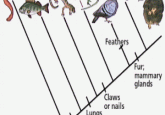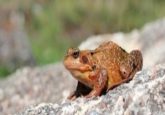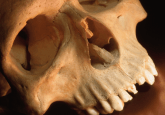I’ve got frills, we’re multiplying

Sexual selection is the driving force shaping the manes of lions, the colorful feathers of peacocks, and the fabulous dances of birds of paradise. But until now, little was known about its role in the evolution of the animals that ruled the earth for over 150 million years: dinosaurs.

An artist’s portrayal of sexual selection and social dominance in Protoceratops.
Credit: Rebecca Gelerenter
Sexual selection shapes animal evolution, but until recently, paleontologists neglected its role in dinosaurs. “It’s a quirk of history that mainstream biology and paleontology separated really early on in the 1800s,” said David Hone from Queen Mary University in London. Two centuries ago, paleontology was much closer to geology than biology, but the field has begun to swing. “This means that oftentimes paleo-biologists are rediscovering [concepts] that biologists have known for a long time.”
To study sexual selection in dinosaurs, researchers need specimens from species related closely in time and space, as well as fossils from juveniles and their adult counterparts. These are not easy to come by, given that fossils are usually separated by tens of thousands of years. “Thankfully there’s an exception, and that’s Protoceratops!” Hone said. Using fossils from this family of dinosaurs, Hone and his colleagues recently presented the first detailed account of sexual selection shaping dinosaur features in the journal Palaeontologia Electronica.
Animals preferentially allocate resources to body growth early on in life before developing secondary sexual features—such as the manes of lions, the antlers of deer, and the horns of sheep—when they reach sexual maturity. Hone’s team looked for a similar pattern of growth in fossils of the six foot long Protoceratops andrewsi, which lived 70 to 80 million years ago in the Late Cretaceous period in what is now known as Mongolia.
After collecting skull measurements from 37 Protoceratopspublished in the literature, combined with photographs of specimens, the team found a pattern in the dinosaur frills. “There is relatively little growth in [frill length and frill width] early on, but once the dinosaurs get to a size where we think they can sexually reproduce, suddenly their frills get big really fast,” Hone said.
With the first evidence of sexual selection in dinosaurs in hand, Hone’s team is now gathering more evidence from Protoceratopsfossils around the world and developing a detailed methodological approach for studying sexual selection in dinosaurs.





